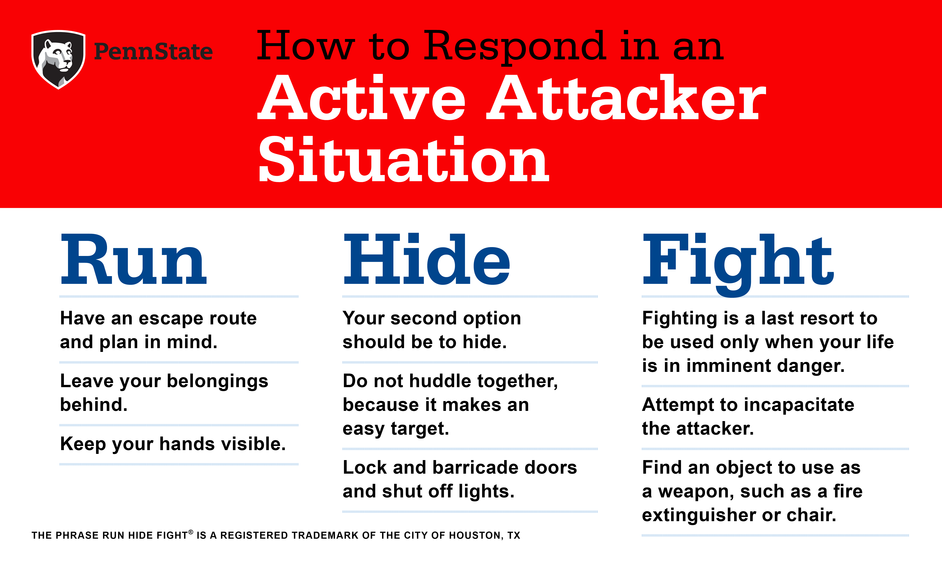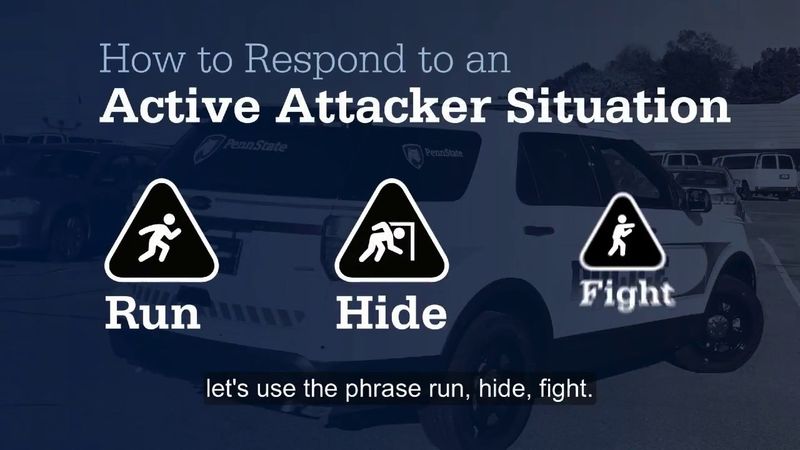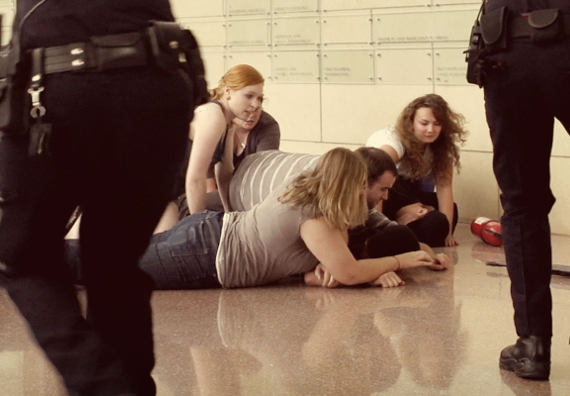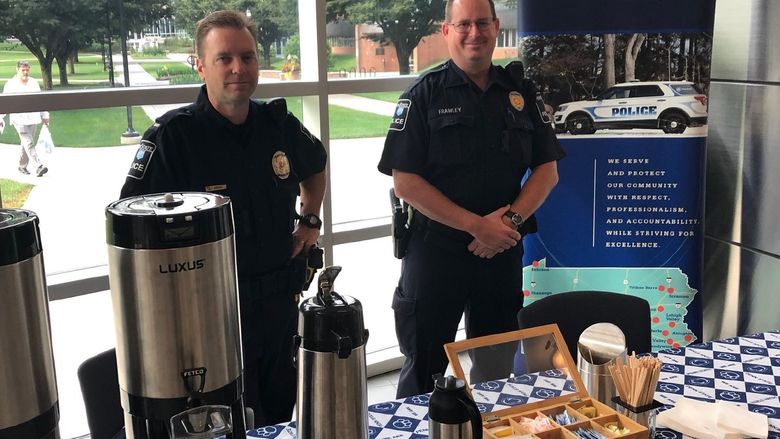
UNIVERSITY PARK, Pa. — No one ever plans to be the victim of a violent attack, but as acts of violence continue to make headlines across the nation, it’s important to plan ahead and know what to do before being confronted with an emergency.
To help students, faculty and staff be prepared to respond to a potentially life-threatening situation, Penn State has adopted Run, Hide, Fight, replacing StaySAFE as the University’s official active-attacker response.
“Penn State historically has had its own iterations of active-shooter programming, and by adopting Run, Hide, Fight, we are bringing our terminology and training in line with the national standard,” said Charlie Noffsinger, assistant vice president for University Police and Public Safety. “Just as our campus police consistently train for and are equipped to respond to an active attacker, we want our community members to be equally prepared and know what to do in an emergency situation.”
Run, Hide, Fight is endorsed at the local, state and federal levels, including by the U.S. Department of Homeland Security and the FBI, and the majority of Penn State’s Big Ten peers have adopted the program. Additionally, Noffsinger indicated that the program is already familiar to many students who learned Run, Hide, Fight in high school.
“Educating our community about the Run, Hide, Fight method will provide students, faculty, staff and visitors at all Penn State locations with the tools to think clearly and act quickly in the face of a violent attack, hopefully resulting in lives saved during the first critical moments of an emergency,” Noffsinger said.
University Police and Public Safety is offering Run, Hide, Fight training to campus groups now, and training can be requested at https://police.psu.edu/community-education. All members of the University community also are encouraged to watch an online training video produced by WPSU and University Police illustrating Run, Hide, Fight in action. The video can be accessed at https://runhidefight.psu.edu.
Run, Hide, Fight offers three courses of action if confronted with an active attacker, making it easy to recall and act upon in an emergency: run if you can, hide if you can’t, and fight as a last resort. Beyond the program’s namesake actions, University Police is providing additional guidance to community members on what to do during each step in the process.
Run
— Have an escape route and plan in mind.
— Make sure it is safe to leave the area you are in. Use your eyes and ears to determine if it is safe to run.
— Leave your belongings behind.
— Keep your hands visible.
— Once in a safe place, call police and give detailed information about what is happening. Don’t assume someone else has already called the police.
“The basic premise of responding to an active attacker is to get out of the area safely,” said Officer Adam Rawding, a member of Penn State’s Community-Oriented Policing Unit. “So run, if possible. Find an avenue for escape. Have an escape route in mind even before there is a crisis.”
University Police also is reminding community members to be mindful about what they’re posting on social media, and to focus first and foremost on their safety and the well-being of those around them.
“Your primary goal should be to get yourself somewhere safe, and then alert authorities as quickly as you can,” said Keith Morris, chief of police at the University Park campus. “That’s not the time to be tweeting or posting on social media. That’s the time to be calling 911 and giving very detailed information as to what exactly occurred.”
Hide
— If unable to run from the danger, your second option should be to hide.
— Find a place that’s out of the attacker’s sight and remain quiet.
— Do not huddle together, because it makes an easy target.
— Lock and barricade doors and shut off lights.
“Find a place that’s going to lead to your survival,” said Rawding. “Turn off the lights, silence your cellphone, and make it look like the area is vacant. Lock and barricade doors — do whatever is necessary to slow the attacker. The more time you can delay the attacker, the better opportunity we’ll have to get there and confront them.”
Fight
— Fighting is a last resort to be used only when your life is in imminent danger.
— Find an object to use as a weapon, such as a fire extinguisher, backpack, book or chair.
— Attempt to incapacitate the attacker; commit to your actions; work with others.
“Fighting is a last resort; however, it could be the first thing you have to do,” said Rawding. “If an attacker is at the door, fighting may be your only option. It’s a mindset of survival.”
A report of an active shooter or attacker would result in rapid response by law enforcement to the scene and communication to the community by email, text, telephone and social media using the University’s PSUAlert system. Initial alert messages would quickly be followed by critical information and regular updates.
All Penn State students, faculty and staff receive PSUAlert messages by email, and anyone can choose to receive messages by text message or phone call as well by visiting http://PSUAlert.psu.edu. At that address, users also can choose to receive alerts for multiple Penn State campuses. In the event of an emergency, PSUAlert will be used to provide the campus community with critical information.
While University Police trains regularly and has robust policies and procedures in place for active-attacker situations, Noffsinger said it is critical that community members take the time to familiarize themselves with Run, Hide, Fight, as it is designed to help people survive an attack in the first crucial moments before police arrive on the scene.
“For the first couple of minutes of an attack, people must be able to think for themselves, act for themselves, and, to an extent, defend themselves, until the police can get there,” said Noffsinger. “So those first few minutes are critical, as acting quickly and decisively can truly be a matter of survival.”
While Run, Hide, Fight is official protocol at Penn State, Rawding said the principles apply anywhere.
“This isn’t something that once you leave Penn State’s jurisdiction that you forget about,” said Rawding. “No matter if you’re eating at a restaurant or shopping at the mall, if confronted by danger, the same survival mindset is needed.”






